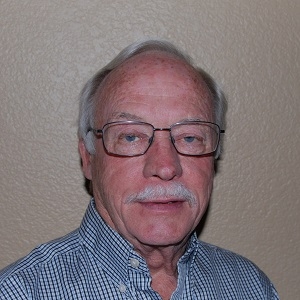New Leadership

Guest writer Sonya Law returns this week with the Human Resources perspective in “New Leadership.”
New Leadership: It’s time to expand our definition of what makes a great leader!
According to Harvard Business Review: “Leadership is a conversation” It is less about issuing and taking orders than about asking and answering questions” which leads us to the first quality…
Leader as Coach
Whether it is formal or informal both styles of coaching have value. We know in sport that coaching tends to be very structured although this is changing too, as coaching is as much about coachable moments on field as off the field.
As a leader within an organisation the value is in the coachable moments, in real-time its powerful.
A good leader is self-aware and recognises what is needed to be said at the opportune moment. It is timely advice and the right guidance at the right moment and is well received by the employee and builds a positive feedback loop for the individuals growth.
These moments build trust, as they feel that the leader is going to be with them every step of the way, which creates shared commitment and purpose. Its these strong emotional bonds that leaders need to maintain a positive feedback loop for learning and growth of their team. When you have the people, both their hearts and mind you can extract unrealised potential and discretionary effort from each member of the team.
Why is this important?
Gallup Poll 2023, measure’s global engagement levels in organisations, currently at 15% engaged workforce. Reporting that employees are not emotionally connected to their work and do the bare minimum.
When you have a strategy to win and be the best, bare minimum, with 85% of the workforce disengaged and only 15% engagement it’s not enough, in a competitive environment to achieve high performance.
Why wouldn’t you want extra effort?
When people are emotionally invested you can extract discretionary effort and unrealised potential of employees, when there is an improvement in Leadership Effectiveness. There is a positive impact to the overall human effort towards achieving the organisations goals.
We need to turn our focus towards Leadership Effectiveness and adopting a more humanistic approach, to drive a high-performance culture.
What is key in driving a high-performance culture?
Creating a work environment that builds emotional connection will elicit high performance because there will be high levels of trust. Leadership is both an art and science, there is not a perfect formula, it is often knowing our style and being able to adapt, that is the best predictor of success.
When I think about building trust in teams, the gurus are John and Julie Gottman, they are well known for their relationship work with couples in building trust, but before now probably not thought of in terms of business relationships. The science or in this case psychology still stands, building trust and connection has the same elements.
When an employee makes a bid for connection towards their manager, this is an opportunity for the manager to acknowledge them and transmit a feeling of being valued to the employee. For example, you walk into the office each morning and say a quick good morning to your team, they try to engage with you, but you race to your first meeting, not allowing anytime for conversation. This will affect the trajectory of their day and over time unmet bids for meaningful connection at work, will result in poor behaviours, disloyalty, and disengagement.
However, in a thriving and positive workplace where space is created for meaningful connection between managers and their teams, behaviours you are more likely to see are: –
- Helping Customers
- Coming to you with solutions not problems
- Being more open to Change
- Raising issues before they become bigger.
Leaders energise teams.
They own it, by taking responsibility for their own energy levels. The best leaders I know have a morning routine, the alarm goes between 5am and 6am and they exercise because they know, when they do, they will have more energy to complete the tasks of the day. They report feeling more energised and increase in productivity and receptivity to those around them. Leading them to be able to not only boost their energy levels but that of their team.
They respond to emails with energy, they communicate with the appropriate level of energy and passion it takes to enliven a team. Being aware about your own state and being intentional in the tone and energy of your emails and verbal communication and body language can motivate or demotivate your team, be aware and conscious of your energy levels.
Leaders who prioritise their self-care and that of their team by role modelling and having regular conversations about the importance of wellbeing. Will have a more energised team to keep up with the pace and demands of today’s workplace.
Leaders foster inclusivity.
They do not have all the answers, but are prepared to lean in, listen and learn. They engage with experts in the field and want to understand how they themselves can be more inclusive in their language and behaviours.
Leaders are Emotionally Intelligent (EQ)
They are aware that to be a great leader you need to be self-aware and be able to self-regulate your own emotions to provide a safe working environment. If we are divisive and reactive most of the time this will lead to an unpredictable and unstable environment.
The most powerful tool in EQ is awareness, when you are aware of bids for connection from your team, these are the micro-moments that enable you to build emotional connection which creates a sense of belonging for your people.
Leaders have empathy.
Leaders who have empathy and build connection with their people, will get the best from them.
Some leaders, already know they wear their heart on their sleeve, and they understand it is a balance and to not demonstrate empathy, is a bigger risk, particularly in navigating the sensitivities of their younger team members (generational).
When there is emotional connection in the team it elicits discretionary effort and a willingness to go into the trenches and even endure some stress.
Empathy simply is not prioritising your comfort over someone else.
Leaders find it hard to step into empathy because it is uncomfortable and makes them feel vulnerable.
By paying attention to how you are showing up in this space, you could ask for feedback on how well you listen, your language (both verbal and body language) and experience for the other person.
Empathy is a skill set and can be learned, you can develop your own style, and build it in 3 ways:
- The first step in empathy, is making the other person a priority and showing genuine interest.
- Tune into them, it is a human skill like a muscle that can be strengthened with practice.
- Empathy is a sense, of sensing someone else’s emotion. (If you have completed your MBTI, check your results for ‘Sensing’). Or any EQ, emotional intelligence test.
Your own personal and lived experience affects your level of empathy.
Leaders who embrace diversity of human experience. Can listen more effectively, expanding their “emotional range” having a “full life” helps with empathy and seeking out a wide range of experiences, making them more relatable.
Leaders tell me most of their problems are people related and spend most of their time, effort, and energy on them. When we build our empathy muscle and develop a more humanistic approach.
The benefits of a humanistic approach are:
- Improved people outcomes
- Focus on critical projects which impact the business.
- Leading and implementing change
- Maintaining an engaged and energised workforce.
Some leaders are good technically and they rise into leadership roles, and they lack the soft skills, particularly empathy which is a key skill in leading people. Volvo have recognised this and trained 20% of their People Managers in MHFA (Mental Health First Aid) as they recognise the importance of a safe workplace both physically and mentally.
Leaders who demonstrate empathy and have a sense of where people are at emotionally, allows them to resolve issues early before it becomes a conflict and litigious.
Leaders are prepared and value a Growth Mindset
Leaders who are focused, intentional and limit distractions get what they want. Why?
They prepare for conversations, they prepare for meetings they know what they want to say, what they want from the team. They are always aware of the bigger picture and how they can collaborate and involve the necessary stakeholders and decision makers in important decisions and direction of the team and business.
They do not leave things to chance.
They have a process of reflection and analysis to ensure they themselves are growing and developing as a leader and engage in their own learning. They value a growth mindset and know it’s important to being innovative and adaptive.
Leader’s nurture young talent and innovation
Leader’s nurture young talent and recognise that good ideas can come from anywhere whether it is your first day on the job or you have been there for 20 years. Providing systems where you develop your youth and innovation will deliver value to any organisation and is worth the upfront investment of time and effort. It’s important to provide opportunities for young people to connect and learn from leaders.
Leaders promote wellbeing.
They promote wellbeing for themselves and the team, they seek to understand what is important to the people by asking them and make it a weekly focus to check in on their level of burnout. Leaders prioritise safety and know their most asset is their People, understanding that wellbeing includes both mental and physical safety, they take a wholistic approach.
Leaders connect people with Purpose.
They look for ways to connect people with their talents and drive purpose and passion where possible to ensure the people feel energised and not burnt out. Much of burnout and overwhelm is not being aligned at work and not having impact. Author Liz Wiseman wrote a book called Impact Players which explores this concept further.
Leaders get uncomfortable and show up in an authentic way.
They are prepared to have difficult conversations that need to be had. They do not put their comfort ahead of others and make space for these conversations in their day.
Leaders create a sense of safety when difficult issues arise, to allow difficult issues to be raised and worked through in a respectful, open, and transparent way. They look for ways to lead by example which gives those around them permission also, to be authentic at work.
Leaders humanise the workforce.
They humanise the workforce and understand whilst financial sustainability and good administration is the foundation of any business there is a human aspect to what we do. Even in the most competitive and brutal environment of Tour De France, Netflix series featuring cyclist Mark Cavendish shares the human side and pressures of competitive cycling.
Leaders celebrate.
Leaders celebrate with the team to create a sense of belonging and shared purpose. The team that celebrates together stays together. Having fun and being away from the stresses of the workplace and celebrating creates lots of moments of connection and may serve to improve cross functional relationships.
Creating a high performance and winning culture, that establishes traditions and rituals to celebrate milestones, recognise the team and the wins along the way, will support the group in overcoming obstacles and building resilience.
Leaders are positive.
Finally, leaders who are positive, generous, charismatic, yet realistic, provide the most valuable thing to their people, they give hope. When you are not winning, the work can feel like a grind and people who lift each other are vital to the group not losing hope. A leader who is focusing on the positives, and moving forward will encourage the group to do the same. Positivity is contagious. We invest a lot in our people to build them up, be careful not to slip into low energy moods and negativity. Always be thinking as a leader, what can I do today to make it better tomorrow!
The bottom-line benefits are:
- Engaged workforce – improving productivity and reducing staff turnover.
- Openness to change – digital transformation and critical business projects actioned.
- Reduction in burnout – less absenteeism, increase presenteeism, reduced work cover claims and legal disputes.
Raising questions?
Why wouldn’t you invest in Leadership Training?
Why wouldn’t you invest in Leadership Coaching?
Why wouldn’t you want to protect your leaders from Burnout?
‘If you take care of your leaders they will take care of your people, who take care of your business’.
Contact Sonya Law founder of SL Human Resources Consulting if you are interested in leadership training, coaching and strategies to avoid burnout in your leaders.
Did you enjoy this blog? Read more great blog posts here.
For our course lists, please click here.









